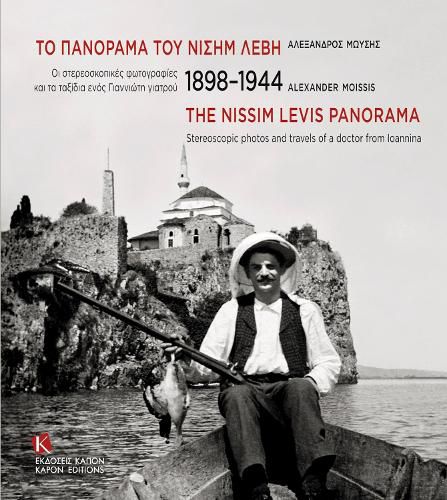Readings Newsletter
Become a Readings Member to make your shopping experience even easier.
Sign in or sign up for free!
You’re not far away from qualifying for FREE standard shipping within Australia
You’ve qualified for FREE standard shipping within Australia
The cart is loading…






Distributed by University of Exeter Press. 266 duotones. A touching photographic journey, captured in over 500 stereoscopic glass plates by the doctor and photographer Nissim Levis, a member of a prominent family in the Romaniote Jewish community of Ioannina, a city in north-western Greece. They were found by chance, in a historical corner of the city, in the possession of a street vendor who invited passersby to examine them for a fee by looking into a wooden box - one frank for the panorama, ladies and gentlemen! A charming voyage in time that starts during the last fifteen years of Ottoman rule in Ioannina, with stops along the way for the city’s major historical events and for visits to some of the world’s most cosmopolitan locales of that period. Most of all, however, it is a small tribute to the memory of a group of individuals who would otherwise have been remembered only as simple rows on the Holocaust Museum’s list of victims. At a time when people take photographs on the slightest occasion, take selfies with smartphones and upload all kinds of events to social network pages, the click of the camera seems to have been lost. Thousands of photographs are stored on computer hard drives, may never be viewed again and drift into oblivion in the digital universe. Photographs in fact have their own life, that encompasses living memories and sentiments - just like the glass photographic plates that form the basis of this book. Not only do we see important historical events unfold over the years, but we also see the everyday life of residents from different ethnic and religious groups - Christians, Jews and Muslims - with their various occupations and attire. More than that, the rescued photographs contain valuable information on the diplomatic background and the battle leading to the liberation of Ioannina, and on the historical background and prevailing atmosphere in Europe and in Ioannina between the two World Wars.
$9.00 standard shipping within Australia
FREE standard shipping within Australia for orders over $100.00
Express & International shipping calculated at checkout
Distributed by University of Exeter Press. 266 duotones. A touching photographic journey, captured in over 500 stereoscopic glass plates by the doctor and photographer Nissim Levis, a member of a prominent family in the Romaniote Jewish community of Ioannina, a city in north-western Greece. They were found by chance, in a historical corner of the city, in the possession of a street vendor who invited passersby to examine them for a fee by looking into a wooden box - one frank for the panorama, ladies and gentlemen! A charming voyage in time that starts during the last fifteen years of Ottoman rule in Ioannina, with stops along the way for the city’s major historical events and for visits to some of the world’s most cosmopolitan locales of that period. Most of all, however, it is a small tribute to the memory of a group of individuals who would otherwise have been remembered only as simple rows on the Holocaust Museum’s list of victims. At a time when people take photographs on the slightest occasion, take selfies with smartphones and upload all kinds of events to social network pages, the click of the camera seems to have been lost. Thousands of photographs are stored on computer hard drives, may never be viewed again and drift into oblivion in the digital universe. Photographs in fact have their own life, that encompasses living memories and sentiments - just like the glass photographic plates that form the basis of this book. Not only do we see important historical events unfold over the years, but we also see the everyday life of residents from different ethnic and religious groups - Christians, Jews and Muslims - with their various occupations and attire. More than that, the rescued photographs contain valuable information on the diplomatic background and the battle leading to the liberation of Ioannina, and on the historical background and prevailing atmosphere in Europe and in Ioannina between the two World Wars.